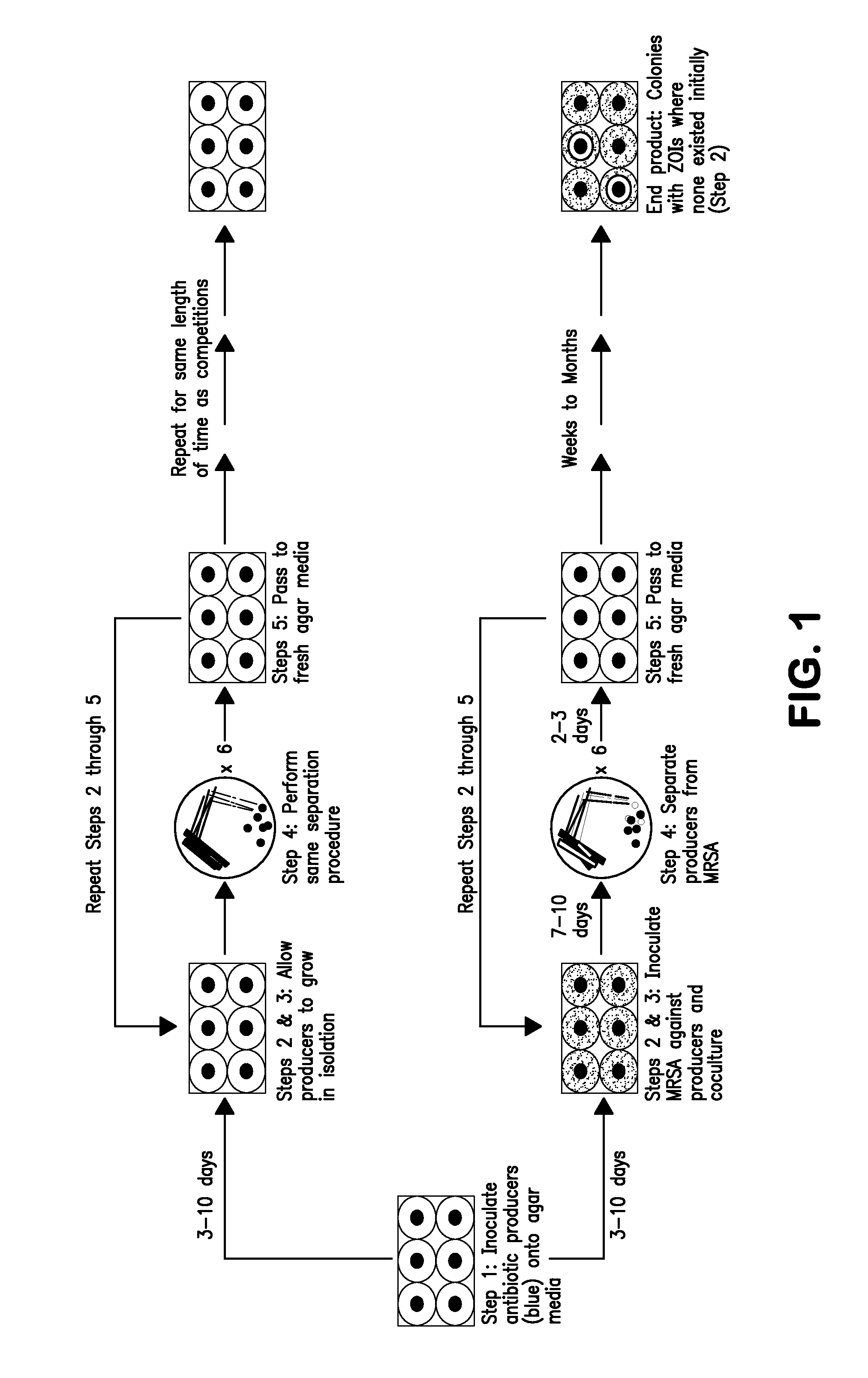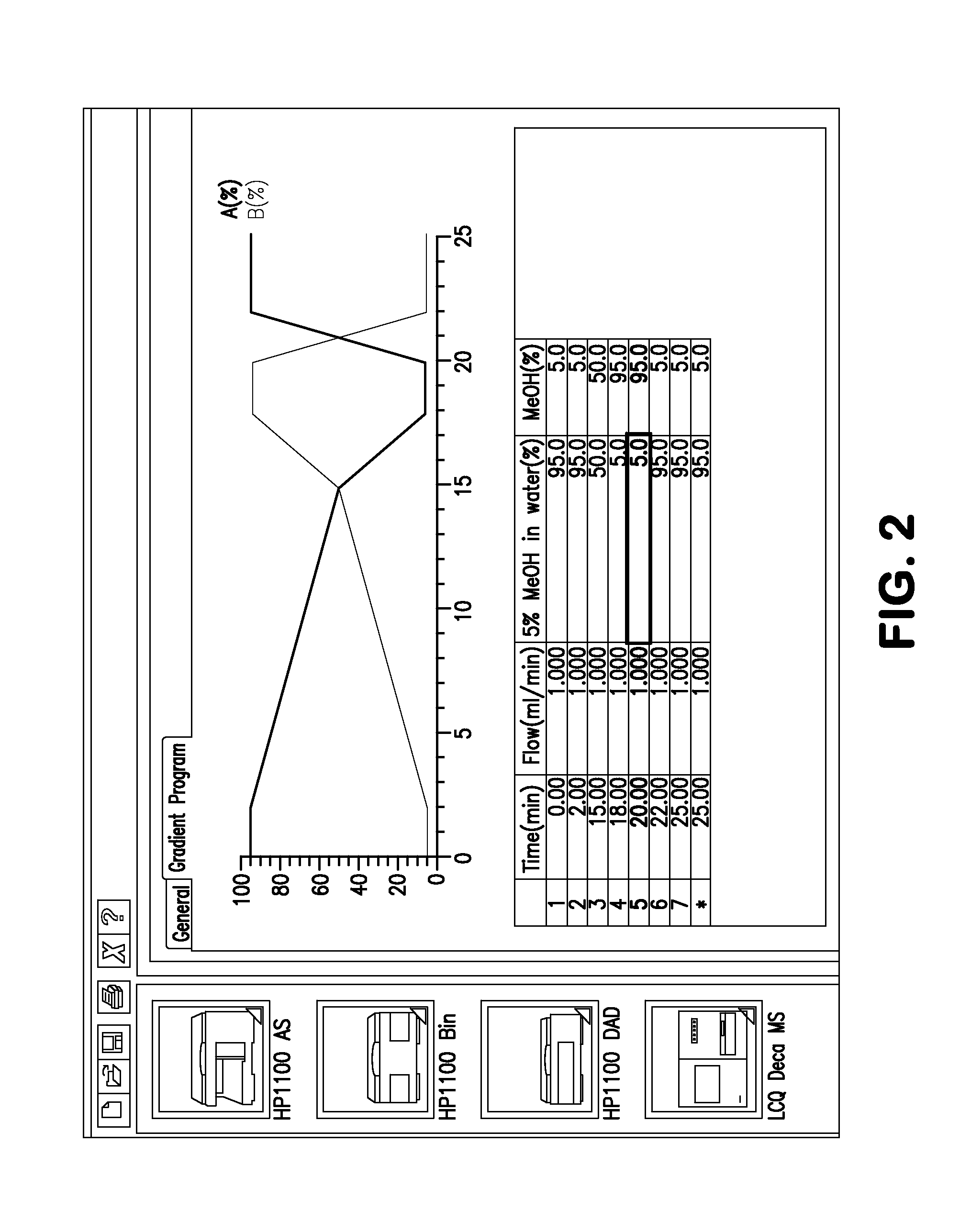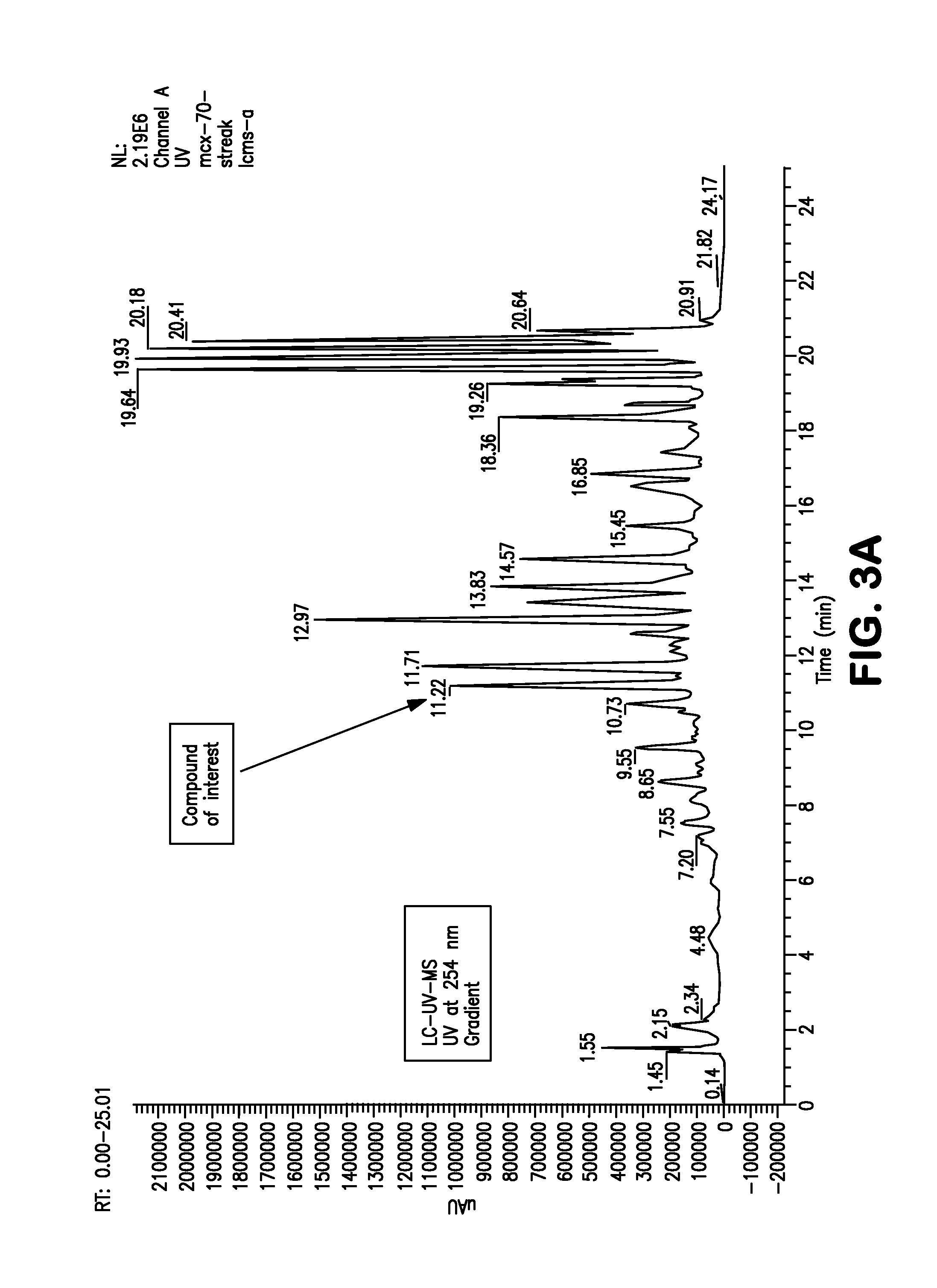Method to Generate Novel Bioactive Molecules
a bioactive molecule and novel technology, applied in biochemistry apparatus and processes, microorganisms, organic chemistry, etc., can solve the problems of high false positive rate, difficult implementation, and nearly impossible to determine a priori the optimal growth environmen
- Summary
- Abstract
- Description
- Claims
- Application Information
AI Technical Summary
Benefits of technology
Problems solved by technology
Method used
Image
Examples
example 1
Generation and Identification of Clavu7 Strain and Holomycin
[0093]This example illustrates how the present method can be used to generate a mutant, adaptively-evolved strain that synthesizes larger quantities of an antibiotic than the wild-type strain. In this case, the producer organism was Streptomyces clavuligerus ATCC 27064 and the target organism was methicillin-resistant Staphylococcus aureus strain N315 (MRSA N315). MRSA N315 is resistant to erythromycin and many β-lactam antibiotics such as penicillin.
[0094]Wild-type S. clavuligerus mycelia or spores are first inoculated into a triple-baffled flask containing trypticase soy broth (TSB) and incubated at 28-30° C. A magnetic stir plate spun a stir bar inside the flask at approximately 1500-2000 rpm to aerate the liquid broth. Once the culture reached an optical density at 600 nanometers (0D600) between 0.08 and 0.13, 2 μL aliquots of the culture were spotted onto each of seven equidistant points on a trypticase soy agar (TSA) ...
example 2
Generation of Novel Compounds Using Mutagenesis
[0126]This example illustrates possible variations of the present method of competitive adaptive evolution.
[0127]The present method is not limited to competition / co-culture between only one producer versus only one competitor. The method can be carried out using more than two organisms. An exemplary system is one in which a producer microbe requires the presence of another microbe for growth. Both of these microbes would therefore be competed against the target organism. A need for another microbe might arise if it synthesizes an essential metabolite that the producer needs.
[0128]Both the producer and competitor can be genetically-modified variants of wild-type strains. For example, a drug resistance gene might be inserted into a strain that is normally sensitive to that particular drug. This modified organism could then be used as the competitor. As another example, an antibiotic biosynthetic gene cluster might be inserted or deleted f...
example 3
Purification of Holomycin
[0131]The following example illustrates a procedure for the purification of holomycin.[0132]a. Grow up a pre-culture of clavu7 from the frozen stock using TSB as the growth medium.[0133]b. Once the preculture has grown up, adjust its optical density at 600 nm (OD600) such that it is between 0.08 and 0.13.[0134]c. Make streaks of the OD600-adjusted clavu7 culture onto tryptic soy agar (TSA) plates.[0135]d. Four days after the streaks are made, slice the agar with clavu7 on it into small pieces. This is most easily accomplished with a putty knife, mini food processor, or similar device.[0136]e. Extract the clavu7 / agar mixture with 100% methanol (MeOH) for 20-30 minutes. Use a volume of MeOH that is at least 3 times the volume of agar. A stir bar spinning at 150-200 rpm was used to mix the sample during extraction.[0137]f. Remove the solid material and discard, e.g., by using a 0.22 micron membrane filter. Retain only the filtered MeOH for subsequent steps.[013...
PUM
| Property | Measurement | Unit |
|---|---|---|
| molecular weight | aaaaa | aaaaa |
| molecular weights | aaaaa | aaaaa |
| volume | aaaaa | aaaaa |
Abstract
Description
Claims
Application Information
 Login to View More
Login to View More - R&D
- Intellectual Property
- Life Sciences
- Materials
- Tech Scout
- Unparalleled Data Quality
- Higher Quality Content
- 60% Fewer Hallucinations
Browse by: Latest US Patents, China's latest patents, Technical Efficacy Thesaurus, Application Domain, Technology Topic, Popular Technical Reports.
© 2025 PatSnap. All rights reserved.Legal|Privacy policy|Modern Slavery Act Transparency Statement|Sitemap|About US| Contact US: help@patsnap.com



